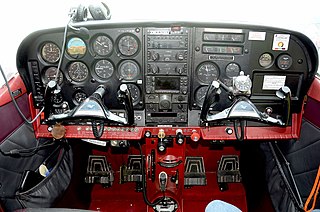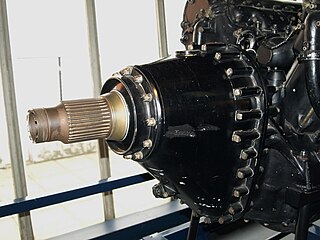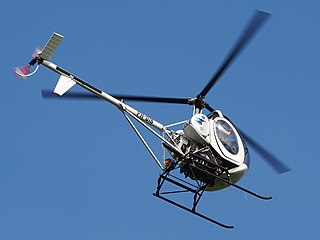The Federal Aviation Regulations (FARs) are rules prescribed by the Federal Aviation Administration (FAA) governing all aviation activities in the United States. The FARs comprise Title 14 of the Code of Federal Regulations (CFR). A wide variety of activities are regulated, such as aircraft design and maintenance, typical airline flights, pilot training activities, hot-air ballooning, lighter-than-air aircraft, man-made structure heights, obstruction lighting and marking, model rocket launches, commercial space operations, model aircraft operations, Unmanned Aircraft Systems (UAS) and kite flying. The rules are designed to promote safe aviation, protecting pilots, flight attendants, passengers and the general public from unnecessary risk.

The Allison V-1710 aircraft engine designed and produced by the Allison Engine Company was the only US-developed V-12 liquid-cooled engine to see service during World War II. Versions with a turbocharger gave excellent performance at high altitude in the twin-engined Lockheed P-38 Lightning, and turbo-superchargers were fitted to experimental single-engined fighters with similar results.

A tachometer is an instrument measuring the rotation speed of a shaft or disk, as in a motor or other machine. The device usually displays the revolutions per minute (RPM) on a calibrated analogue dial, but digital displays are increasingly common.

Aircraft engine controls provide a means for the pilot to control and monitor the operation of the aircraft's powerplant. This article describes controls used with a basic internal-combustion engine driving a propeller. Some optional or more advanced configurations are described at the end of the article. Jet turbine engines use different operating principles and have their own sets of controls and sensors.

The Junkers Jumo 004 was the world's first production turbojet engine in operational use, and the first successful axial compressor turbojet engine. Some 8,000 units were manufactured by Junkers in Germany late in World War II, powering the Messerschmitt Me 262 fighter and the Arado Ar 234 reconnaissance/bomber, along with prototypes, including the Horten Ho 229. Variants and copies of the engine were produced in Eastern Europe and the USSR for several years following the end of WWII.
Revolutions per minute is a unit of rotational speed or rotational frequency for rotating machines.

Pilot certification in the United States is typically required for an individual to act as a pilot-in-command of an aircraft. It is regulated by the Federal Aviation Administration (FAA), a branch of the U.S. Department of Transportation (USDOT). A pilot may be certified under 14 Code of Federal Regulations (CFR) Part 61 or 14 CFR Part 141. Pilots may also be certified under 14 CFR Part 107 for commercial drone operations.

A gear train is a machine element of a mechanical system formed by mounting gears on a frame so the teeth of the gears engage.
A flight management system (FMS) is a fundamental component of a modern airliner's avionics. An FMS is a specialized computer system that automates a wide variety of in-flight tasks, reducing the workload on the flight crew to the point that modern civilian aircraft no longer carry flight engineers or navigators. A primary function is in-flight management of the flight plan. Using various sensors (such as GPS and INS often backed up by radio navigation) to determine the aircraft's position, the FMS can guide the aircraft along the flight plan. From the cockpit, the FMS is normally controlled through a Control Display Unit (CDU) which incorporates a small screen and keyboard or touchscreen. The FMS sends the flight plan for display to the Electronic Flight Instrument System (EFIS), Navigation Display (ND), or Multifunction Display (MFD). The FMS can be summarised as being a dual system consisting of the Flight Management Computer (FMC), CDU and a cross talk bus.

Hobbs meter is a generic trademark for devices used in aviation to measure the time that an aircraft is in use. The meters typically display hours and tenths of an hour, but there are several ways in which the meter may be activated:
- It can measure the time that the electrical system is on. This maximizes the recorded time.
- It can be activated by oil pressure running into a pressure switch, and therefore runs while the engine is running. Many rental aircraft use this method to remove the incentive to fly with the master electrical switch off.
- It can be activated by another switch, either an airspeed sensing vane under a wing or a pressure switch attached to the landing gear. In these cases, the meter only measures the time the aircraft is actually flying. Metrics such as Time In Service and Turbine Actual Runtime are kept to monitor overhaul cycles, and are usually used by commercial operators under Federal Aviation Regulations Parts 135, 121, or 125.
- It can be activated when the engine alternators are online.

A propeller speed reduction unit is a gearbox or a belt and pulley device used to reduce the output revolutions per minute (rpm) from the higher input rpm of the powerplant. This allows the use of small displacement internal combustion engines to turn aircraft propellers within an efficient speed range.

In aeronautics, a variable-pitch propeller is a type of propeller (airscrew) with blades that can be rotated around their long axis to change the blade pitch. A controllable-pitch propeller is one where the pitch is controlled manually by the pilot. Alternatively, a constant-speed propeller is one where the pilot sets the desired engine speed (RPM), and the blade pitch is controlled automatically without the pilot's intervention so that the rotational speed remains constant. The device which controls the propeller pitch and thus speed is called a propeller governor or constant speed unit.

Indian Airlines Flight 491 (IC491/IAC491) was a scheduled domestic passenger flight from Aurangabad to Bombay, operated by India's national airline Indian Airlines. On 26 April 1993, the aircraft operating the flight, a Boeing 737-2A8 with a registration of VT-ECQ crashed shortly after take-off following the aircraft's impact with a lorry and a high tension power line. The crash killed 55 people and injured 63 others.

Alliance Air Flight 7412 was a scheduled Indian domestic passenger flight from Calcutta to Delhi, operated by Indian regional airliner Alliance Air. On 17 July 2000, while on approach to its first stopover in Patna, the Boeing 737-2A8 operating the route nose-dived and crashed into a residential area in Patna, killing 60 people including 5 on the ground.

A turbine engine failure occurs when a turbine engine unexpectedly stops producing power due to a malfunction other than fuel exhaustion. It often applies for aircraft, but other turbine engines can fail, like ground-based turbines used in power plants or combined diesel and gas vessels and vehicles.

Idling refers to running a vehicle's engine when the vehicle is not in motion. This commonly occurs when drivers are stopped at a red light, waiting while parked outside a business or residence, or otherwise stationary with the engine running. When idling, the engine runs without any loads except the engine accessories.

Cathay Pacific Flight 780 was a flight from Juanda International Airport in Surabaya, Indonesia to Hong Kong International Airport on 13 April 2010. On board were 309 passengers and a crew of 13. As Flight 780 neared Hong Kong, the crew were unable to change the thrust output of the engines. The aircraft, an Airbus A330-342, landed at almost twice the speed of a normal landing, suffering minor damage. The 57 passengers who sustained injuries were hurt in the ensuing slide evacuation; one of them received serious injuries.
Engine failure on take-off (EFTO) is a situation, when flying an aircraft, where an engine has failed, or is not delivering sufficient power, at any time between brake release and the wheels leaving the ground / V2. The phases of flight are de-lineated to allow simplified standard procedures for different aircraft types to be developed. If an aircraft suffered engine failure on takeoff, the standard procedure for most aircraft would be to abort the takeoff.
Flight time or block time is an aviation term referring to the total amount of time spent piloting aircraft, and serves as the primary measure of a pilot's experience. Flight time is defined by ICAO as "The total time from the moment an aeroplane first moves for the purpose of taking off until the moment it finally comes to rest at the end of the flight", and thus includes time spent taxiing and performing pre-flight checks on the ground, provided the engine is running. It is colloquially referred to as "blocks to blocks" or "chocks to chocks" time. In commercial aviation, this means the time from pushing back at the departure gate to arriving at the destination gate.

On 8 September 2017, a Schweizer 269C helicopter crashed after an uncontrolled descent during a power-off landing attempt at the Flying W Airport in Medford, New Jersey, United States. The aircraft had experienced engine trouble during a local sightseeing flight for the benefit of passenger Troy Gentry, cofounder and member of the popular American country music band Montgomery Gentry, which was scheduled to perform at a resort at the airport later that day. The pilot died at the scene; Gentry was pronounced dead after being taken to a hospital.















